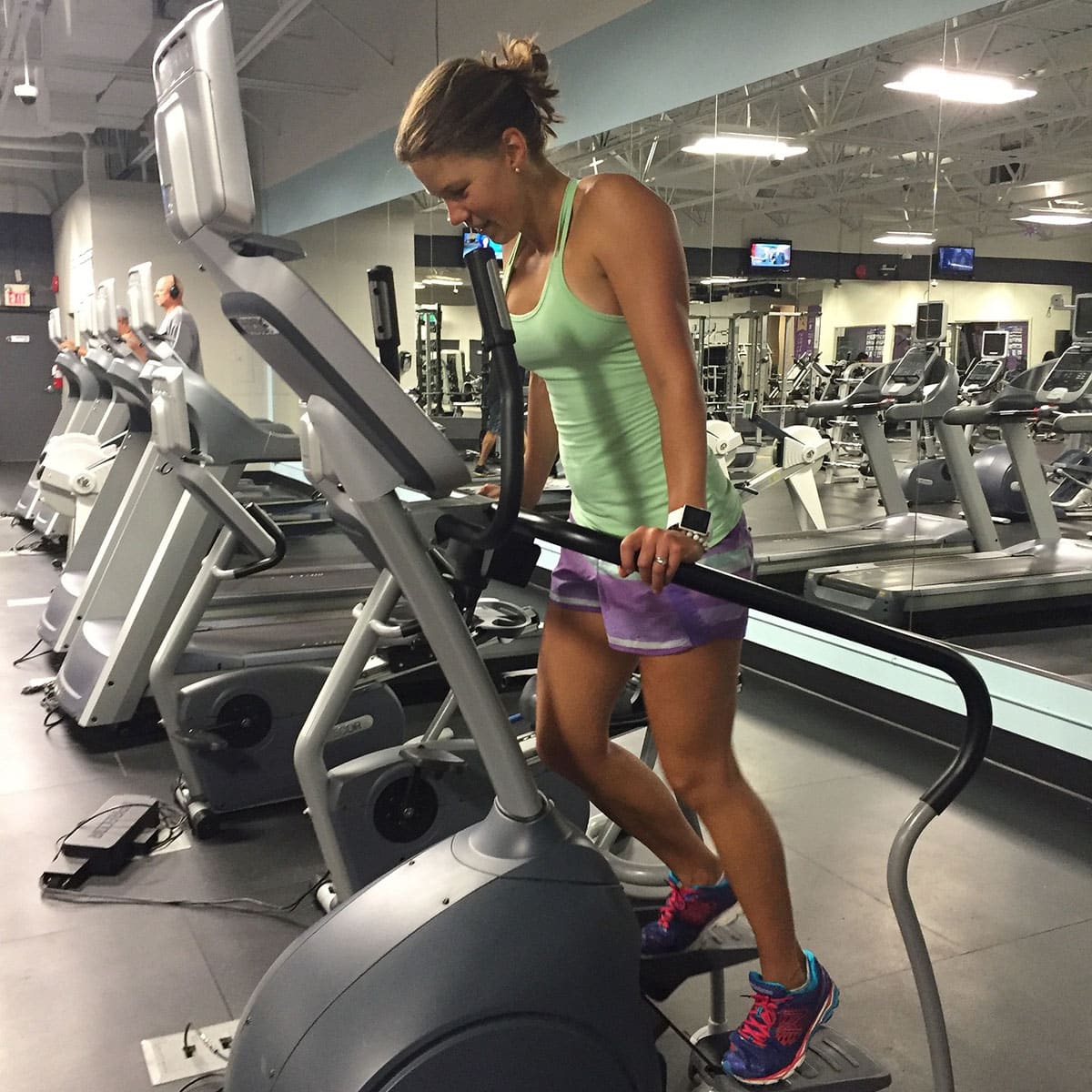Exercise is known for its numerous health benefits, including weight loss, improved cardiovascular health, and increased muscle strength. However, many women may be surprised to learn that certain types of exercise, such as cardio, can lead to a decrease in breast size.

In this blog post, I will explore the science behind how workouts (like cardio) can affect breast size and what women can do to mitigate these effects.
How Cardio Can Decrease Breast Size
When you engage in activities that raise your heart and breathing rate, you’re doing cardiovascular exercise – or “cardio”. Running, cycling, swimming, and dancing are examples of cardio workouts.
Cardio is a good way to burn calories and lose weight, which isn’t a bad thing. The problem with cardio though is that it often leads to smaller breasts. This is because breasts are composed of a mix of glandular and fatty tissues, and weight loss causes fat loss throughout your body, including your breasts.
I should also say that… cardio exercises can decrease your breast size by reducing glandular tissue in your breasts. Glandular tissue is responsible for milk production and is more prevalent in women who are breastfeeding or premenopausal. As women age, the amount of glandular tissue in their breasts decreases, and the breasts become more fatty.
Nevertheless, high-impact cardio workouts such as running and jumping can damage the glandular tissue and speed up this process. This can cause a decrease in glandular tissue and an increase in fatty tissue, leading to a reduction in breast size over time.
How to Mitigate the Effects of Cardio on Breast Size
While the thought of losing breast size may be concerning for some women, it is important to remember that exercise is still a crucial component of a healthy lifestyle. However, here are some steps that women can take to mitigate the effects of cardio on breast size.
Strength Training
Strength training exercises, such as weightlifting or resistance band workouts, can help increase the amount of muscle tissue in the chest area, which can help provide lift and support for the breasts. By increasing the amount of muscle tissue in the chest, women can help offset the effects of cardio on breast size.
I wrote a more in-depth article on that – here!
Low-Impact Cardio
Low-impact cardio exercises, such as swimming or cycling, can be a great alternative to high-impact exercises like running or jumping. These exercises are less likely to cause damage to the glandular tissue in the breasts, making them a better choice for women who are concerned about breast size.
Wearing a Supportive Bra
Wearing a well-fitting, supportive sports bra can help reduce the amount of bouncing and movement of the breasts during cardio exercise. This can help reduce the amount of damage to the glandular tissue in the breasts, which can help maintain breast size over time.
In Conclusion
While cardio exercise can lead to a decrease in breast size, it is important to remember that exercise is still crucial for overall health and well-being. By incorporating strength training exercises, low-impact cardio, and wearing a supportive sports bra, women can help mitigate the effects of cardio on breast size while still reaping the numerous benefits of exercise.
Common Questions
Yes, cardio exercises like running can lead to a decrease in breast size over time due to the loss of fat, including fat from breasts.
Incorporating strength training exercises alongside cardio can help increase muscle tissue in the chest, providing lift and support for the breasts.
Running can decrease breast size over time due to fat loss and potential damage to glandular tissue from high-impact movements.
Yes, weight loss, including fat loss, can lead to a reduction in breast size, as breasts are composed of a mix of glandular and fatty tissues.
